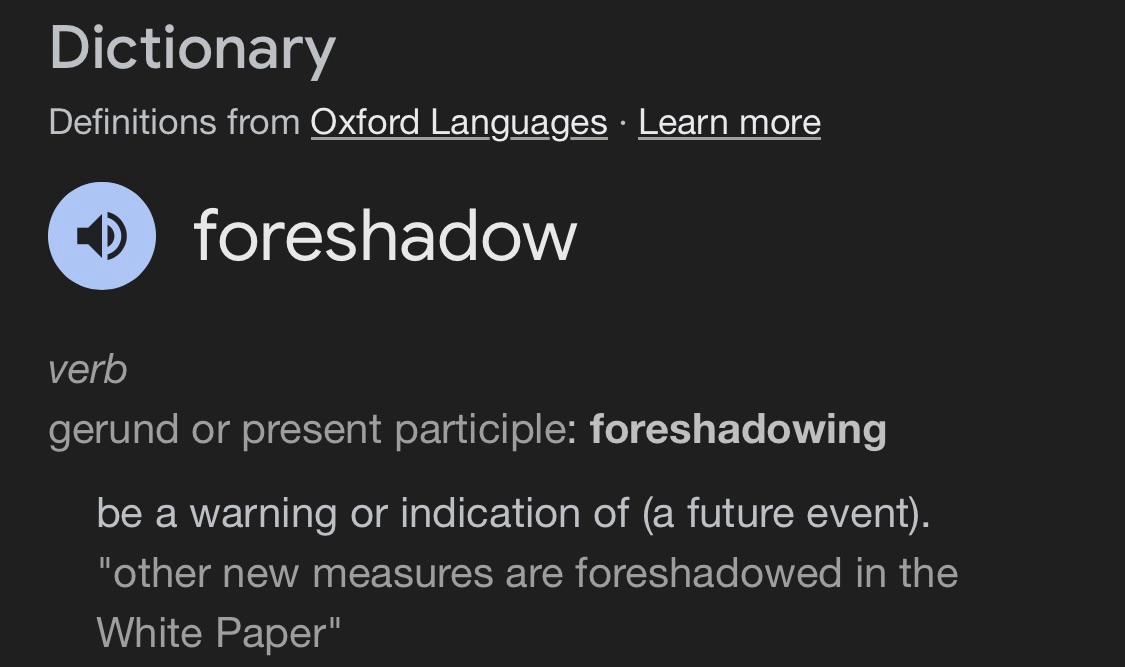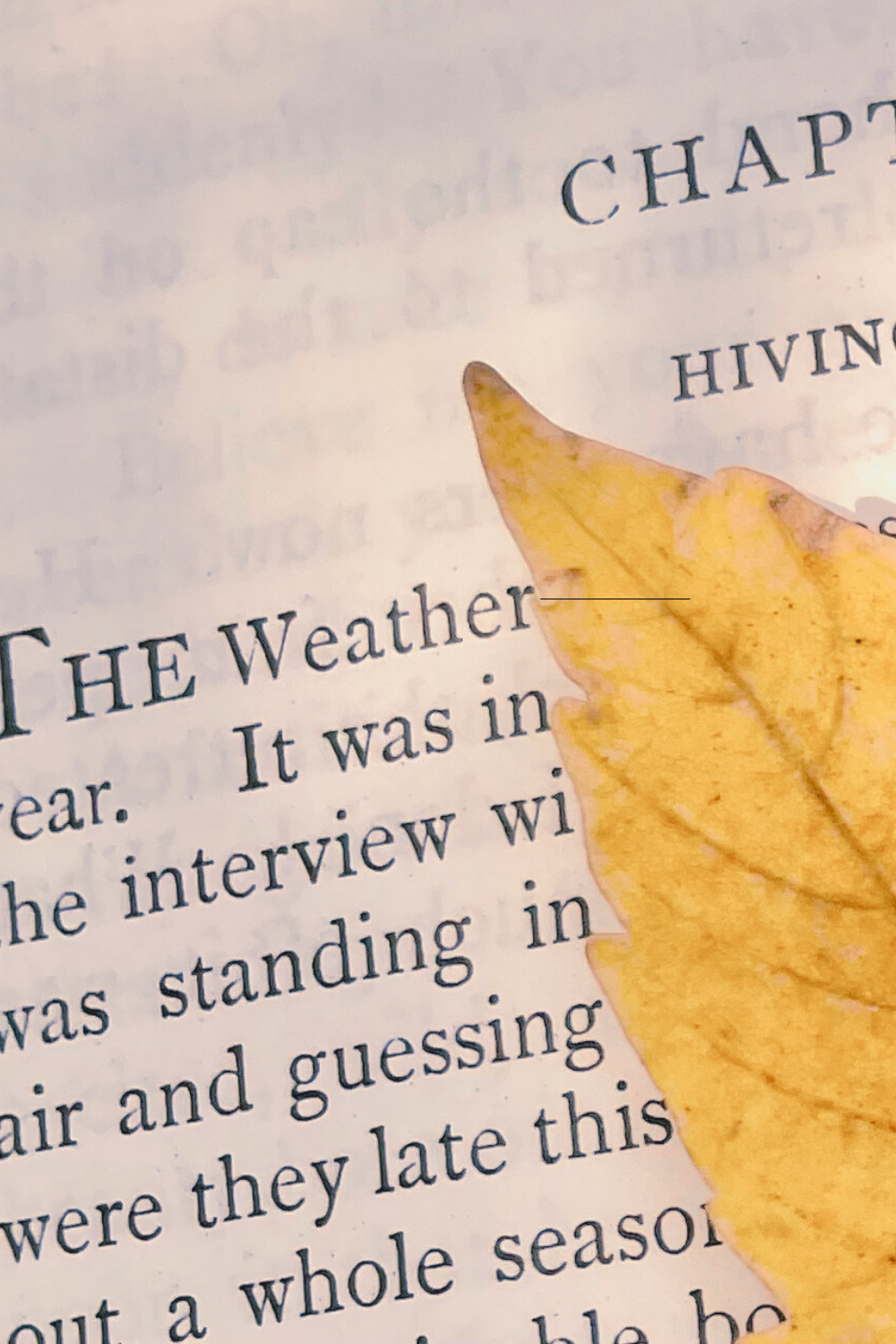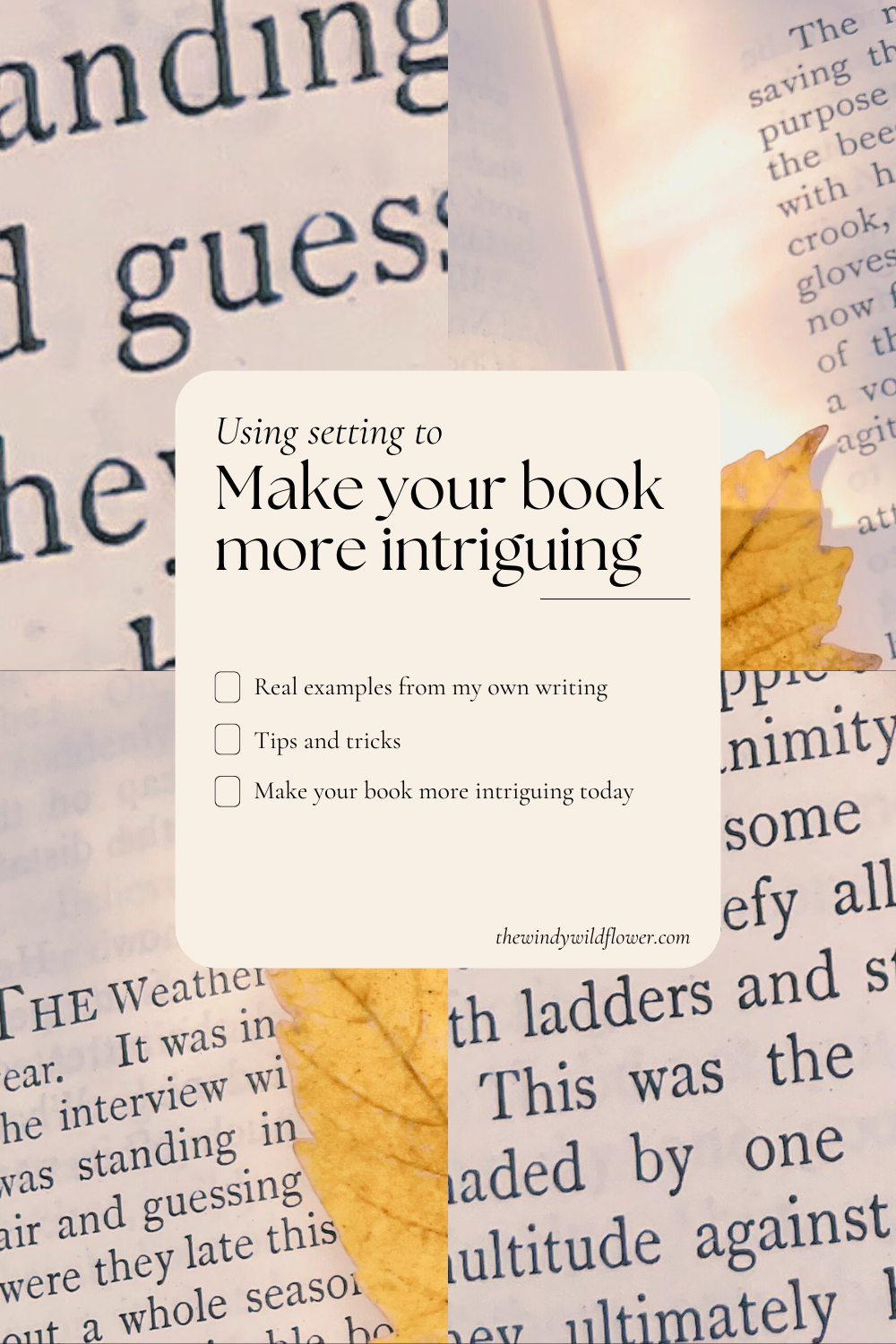Make your book more intriguing with these tips
Back when I was still homeschooling, my mum added to my schedule a study of the book “Jane Eyre”. I was pumped about this, as it was my favourite book, and I was getting to read it for school!
The study was a series of questions that I had to answer about the book. One of the big topics that I have always remembered is “foreshadowing”, especially with setting.
In “Jane Eyre” there is plenty of juicy descriptions and paragraphs of nature and the surroundings of the scene. These descriptions were very often interlaced with emotion and deeper things, essentially: foreshadowing.
This is what comes up if you google the word.

Essentially, it’s a way of grabbing your reader’s attention and saying, “hey, something is about to happen!” without saying it straight out.
But how does foreshadowing work with setting?

Here is an excerpt I wrote a few years ago, just after my “Jane Eyre” study.
“The wind kept blowing and, pressing a hand against her cheek, E felt that it was cold. The smells of that forest place were strange in the dark, strange and unfamiliar. There was the earthy smell from the ground which made E think of beetles, but more unsettling was the smell that came from the lake, a watery aroma, distinctly fresh and weedy. E walked a little faster. She could see the it now, down the slight slope of the hill, to her left, the silver glinting through the trees. E knew that it was fairly far away, all the way over the road and through the pines. But the silver kept catching her eye never the less. It caught it and held it-so tightly that she stopped for a moment. Looking at the glitter of it, she thought about how cold the water would be just then, she thought about how dark and deep the water would look, how if you were to go swimming you wouldn’t know what was beneath you. She let out a shaky sigh.”
Hopefully when you read this you feel something more than just trees and a lake (which don’t incite any feeling in of themselves). Hopefully you feel the slight unease in the air, the hint of something frightening about the lake. Although it is not stated, we somehow know that something is going to happen. The writing has made a promise, of sorts, that something exciting or terrible is ahead. As the reader, we hold to that promise and are intrigued to find out how it will be resolved.

We love questions as readers, and questions aren’t just found in mystery books. They are found in every good book. A good book has us really thinking about things. How are you going to get your reader thinking?
One way of inviting the brain to question is by using foreshadowing in our settings or descriptions.
If you want to use foreshadowing in your descriptions, there are a few things to beware of.
Firstly, using foreshadowing too often, or at every place you can, will significantly dull its effect. The reader will grow numb to your hints and feel frustrated by the repeated clues. Less is sometimes more in this, so that when you do add foreshadowing into a description, the reader is immediately alert and excited for where it will lead.
Secondly, it does need to lead somewhere. If you give plenty of clues and hints to something exciting to come, but that thing never arrives…the reader is going to feel tricked and disappointed – definitely not something we want.
Lastly, be subtle. Again, less is something more here. I often have to weed out blatant comments from my writing because they are straight up facts and not at all inviting the reader to think about anything. Readers are very smart and will pick up on hints, it doesn’t need to be laid out too plainly for them. If you’re worried that it’s too subtle, read the passage to a friend or trusted person and get their opinion. Can they tell something’s going to happen? Can they feel the intrigue?

Here’s another passage from the same book, which relays a different feeling, but in a similar way.
“The wind created, or revealed, an eerie loneliness that was there. A great feeling of desolation and neglect. Daphne looked up at the trees, wishing they would stop their mournful creaking, the leaves, as she looked at them, seemed to be doing a savage dance. Looking ahead- the shadows moved in time with the leaves, joining the strange rhythm that nature had created. Daphne found herself walking in the rhythm too, her very pulse seemed to imitate it. It was weird, to be joining nature in this- this-she knew not what it was, if it was her mind’s creation, or some secret that she had stumbled upon.”
Consider what feelings these words bring up, and how you can bring up certain feelings in your own writing.
Some great things to add when writing foreshadowing descriptions are as follows.
- Interesting words that suit the feeling you are wanting to put across.
For example, in the passage above, the words “mournful, savage dance, creaking, shadows” all help add to the general feeling of the scene.
- The pace of writing.
Your pace and how fast the description is can change how it feels. If it’s a slow deep feeling you might want to write longer sentences, longer words, more drawn out descriptions. Compared to a fright or a frenzy which might need to be sped up to match the feeling. If we’re too long in a fright, it’s going to stop feeling frightening, as we’ll get used to the scene and what’s happening.
- What your character notices.
Are they seeing the big blue sky and giant trees, the wind and the waves. Or are they zoomed in on dragonflies and blades of grass, moss and droplets on leaves. Maybe a more tense description would include more detailed small things, rather than big relaxed ones.
However you write your foreshadowing into your book, it’s a great idea to read it out loud and see how it sounds to you (and someone else if possible). Have fun with words and get creative with how you can intrigue your reader.
